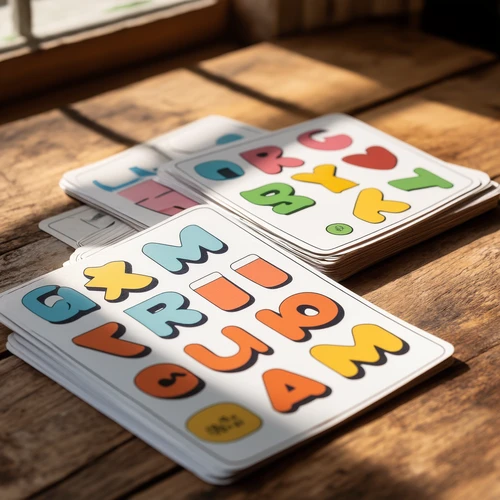Printable flashcards are among the most flexible and cost‑effective educational tools available today. Whether you’re a parent looking to reinforce school concepts at home, a teacher preparing a lesson plan, or a caregiver assisting a child with special needs, these simple cards can be adapted for any learning objective.
The core strength of printable flashcards lies in their personalization. You can print a single set tailored to your child’s current curriculum—or create thousands of themed decks covering alphabet letters, numbers, shapes, colors, animals, or even foreign‑language vocabulary. Because they are printed on standard paper or cardstock, you can swap in high‑quality images, add stickers, or use a ruler to fold into perfect square shapes.
Why Use Printable Flashcards?
• Accessible and Affordable – Once you download a template, the cost is essentially the price of ink and paper.
• Easy to Update – As children’s interests shift, you can update the content without buying new books.
• Encourages Active Learning – The tactile nature of holding a card helps children form stronger memory associations.
• Cross‑Curricular – Use the same set for reading, math, science, or social studies, fostering interdisciplinary connections.
• Portable – Stack them in a small binder or zip‑lock bag and take them anywhere – at school, the park, or during a family road trip.
Creating Your Own Design
Begin with a clean layout: a 1:1 ratio grid keeps each flashcard uniform. Add high contrast text for readability – bold fonts for numbers or letters, italicized notes for phonetics. Consider the visual hierarchy by placing the most important feature (e.g., the letter “A”) centrally, with supporting images or contextual clues around it. If your child is a visual learner, integrate bright colors that match the subject matter. For auditory learners, attach QR codes that link to pronunciation audio.
Downloadable Resources
Numerous free sites provide printable flashcard templates: education.com offers alphabet cards, while superteacherworksheets.com hosts math flashcards. Paid options from K12e.com include professionally designed sets with vector graphics and instructional prompts. Always double‑check the licensing terms; many sites permit personal use with no fee.
Tech Integration
Once printed, give your child a chance to interact with the cards digitally. Use a scanner or a phone camera to upload images, then employ simple apps like Flashcard Hero or Quizlet to create a quiz‑based follow‑up. The combination of physical manipulation and digital review supports both kinesthetic and virtual learning preferences.
Practical Tips for Parents and Educators
• Design small sets of 20–30 cards each; it’s easier for children to practice and to keep track.
• Store completed cards in a plastic sleeve to protect against tears.
• Schedule short review sessions (5–10 minutes) twice a day, using a reward chart to reinforce consistency.
• Encourage children to design some of their own cards—this boosts creativity and ownership of the learning process.
Wrap‑Up
Printable flashcards empower anyone to customize learning experiences quickly and inexpensively. With thoughtful design, they become a cornerstone of both formal and informal education. For parents and caregivers, they offer an engaging way to reinforce lessons at home, while teachers can effortlessly align them with curriculum standards. Dive in, print out, and watch your child’s confidence grow one card at a time.


